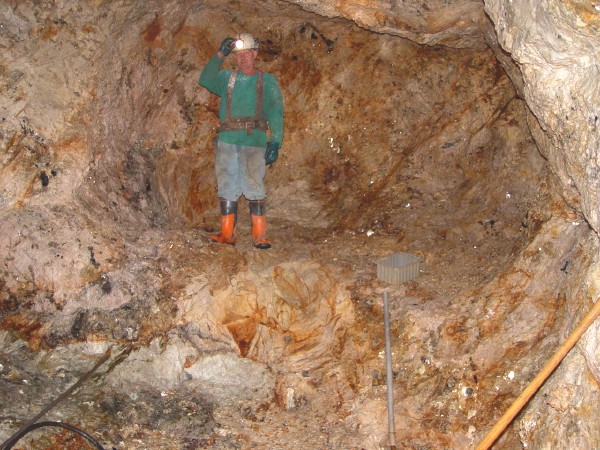
Mount Mica Update - 2006
Gary Freeman
Palm City, Fl 34991
I realize what is interesting to miners, collectors and scientists frequently do not overlap or have the same interest ranking amongst the groups. However, having said that, I think it would be remiss of me to disturb this latest pocket more if it is of scientific interest. The short story is, we have been following a huge feldspar crystal (Figure 1). It is oriented east-west and is more than 5m long. It is located about 23m due south of the Perham workings and is 18m from the surface. We first encountered the crystal on its western end. Pocket 13, an excellent tourmaline producer, was located just under it on the west end. In pocket 13 the spar was sufficiently well crystallized such that it could be dismantled as porcelain as pink or gray bricks.
This week Richard and I started the 3rd advance over the top of this feldspar. As per practice, we first excavated the pegmatite above the mineralized zone. Once we had completed this task, we were struck that the feldspar crystal had turned quite perthitic and appeared to resemble a zebra...of a different stripe. That is, it was composed of broad bands of pink and white strips (Figure 2).
Naturally we were anxious to work the mineralized portion. So as we drilled with the drifter we encountered lots of orange rust. In fact, when we had done the clearing of the upper portion of the pegmatite, we could see there was a muddy crack running up to the contact that was infused with gemmy quartz and locked-in colored tourmalines. On the left side of the exposed mineralization, the spar was white. As we drilled the lifter hole into this white spar we encountered only white cuttings, a little unusual, right up to the moment the drill shot ahead. This too is unusual as typically the approach to a pocket while drilling is signaled by faster penetration through softer material. Water poured out of the drill hole so we knew we had intercepted a more substantial pocket.
After the blast, which had been done with a generous amount of powder, we could see the entrance to the pocket. Once we had mucked out the blast we could clearly see three areas of pocketing. On the left was our water pocket, straight ahead there was blocky white feldspar and black manganese (unusual for us again) with a vug containing a gem tourmaline that was blue and green. To the right of the white spar was massive, milky and cracked quartz with muddy spaces with tourmaline (Figure 3).
When we returned the next morning (sorry this account it dragging) we removed the 'ejecta' from the pocket deposited by the shot. The feldspar surrounding the pocket was extremely hard. The pocket for all intent and purpose was encapsulated in armor. Once the cleaning was complete we could clearly see parallel growth quartz crystals, a nice beryl, and abundant tourmaline. I could not resist taking a view illumination shots. I placed my head lamp behind the beryl for one shot and the tourmaline is lit by the drop light (Figure 4).
Missy was working the screening table and reported that we were finding pink tourmaline. When Richard and I saw it we were struck that it was rose quartz crystals. What we didn't know was that the parallel growth 25cm quartz crystal lying above the beryl was going to be the 'Van Allen Belt of Maine'...this is a little bit of a stretch, but not much. Though covered in a light coating of rust once we got it out into the sunshine we could clearly see a rose quartz girdle starting at the base of the prism running up the side and then back down forming a near 360 degree band. The rose quartz is bright pink, gemmy, and very well formed. The band is 2-3cm wide. We found numerous other pieces of rose quartz. Two are the type where the rose quartz drapes the termination of the crystal. One contains smoky quartz, clevelandite, rose quartz, and green tourmaline (Figures 5 a-c).
We did a little more digging after these first few pieces came out. We have found perhaps 10 index finger-sized tourmalines, one larger rod, abundant needles and cuttable sections of t., gorgeous tourmaline sprays and many quartz crystals with tourmaline accents (Figure 6). A smaller but similar tabular beryl was wrapped at the pocket and has not been exposed to light save for our weak underground illumination. So far I have taken care to minimize the light exposure of the rose quartz. It has only been out of the ground for 48 hours. I'll take a small bright piece and place it in sun light with before and progressive exposure pictures. Our impression based on the limited amount of work we have done in the pocket is that the quartz crystals are associated with the roof as we do not seem to encounter them as we dig down.
______________________________

Figure 1. The big feldspar crystal.
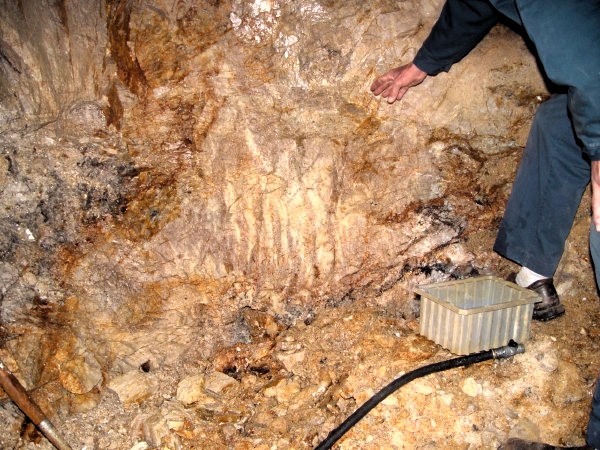
Figure 2. Perthitic portion of the more than 5-meter long feldspar crystal.
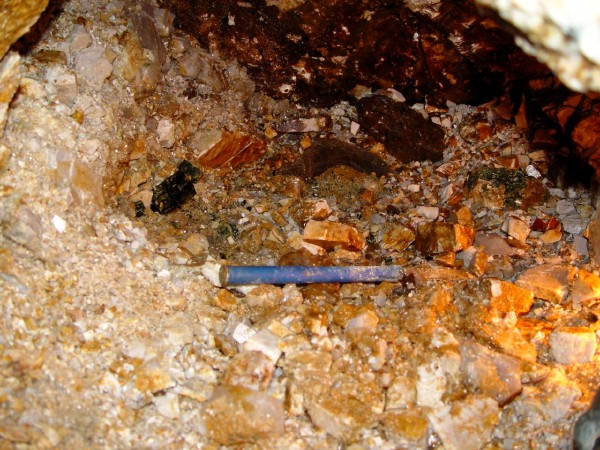
Figure 3. Just Opened

Figure 4. Beryl illuminated from behind.
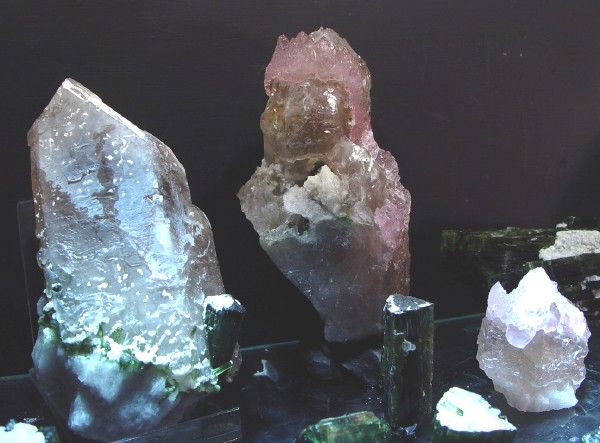
Figure 5 (a). Quartz crystal with tourmaline and smaller rose quartz crystals.
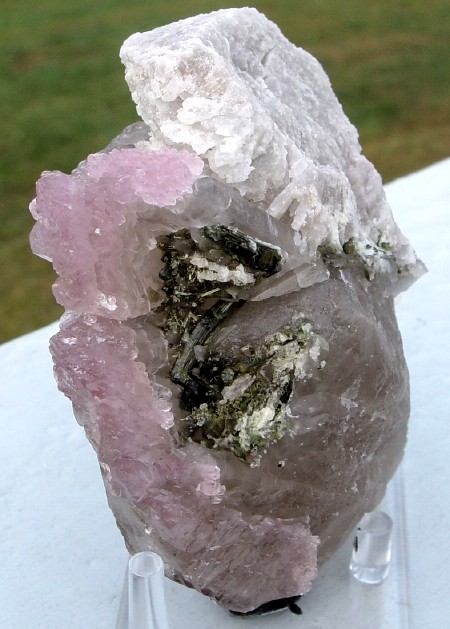
Figure 5(b) Quartz crystal with clevelandite (albite), tourmaline, and smaller rose quartz crystals.
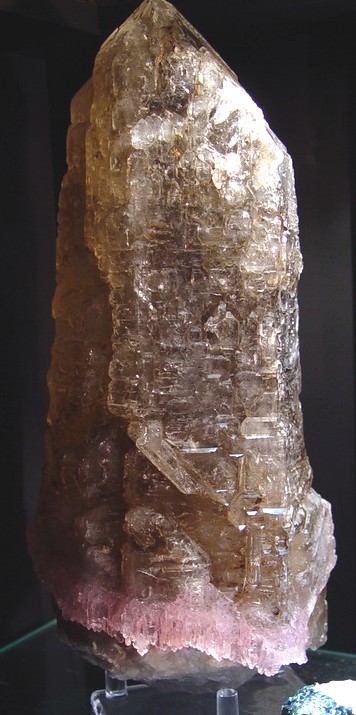
Figure 5(c). Quartz crystal with smaller rose quartz crystals.
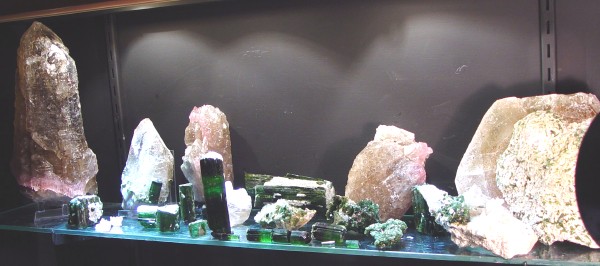
Figure 6: